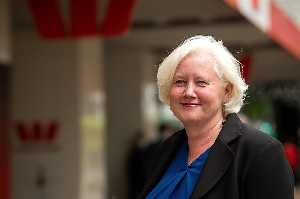
Mortgage demand has increased over the past six months for the first time since 2021.
The major banks say lower interest rates and the number of houses for sale has translated into higher demand for mortgages.
Some part of the recent increased demand has also been from borrowers shifting loan providers to benefit from falling interest rates.
With expectations of further rate cuts and rising house sales, the country’s 15 registered banks say the rebound in demand for loans is expected to continue for the next six months.
The banks were replying to the Reserve Bank’s latest Credit Conditions Survey taken between 1 September last year and 2 April this year before US President Donald Trump slapped tariffs on most countries.
Increased demand for lending has been from both owner-occupiers and investors. While market sentiment is improving gradually, the banks say the impact of lower interest rates takes time to fully materialise.
Mortgage serviceability test rates have dropped across the board. This increase in credit availability is expected to continue for the next six months.
Loans for high-LVR borrowers and those buying new-build properties (either under construction or turnkey) are still subject to stricter affordability checks, though.
However, poor economic conditions and higher unemployment rates are still headwinds against a full recovery in mortgage credit demand, the survey says.
On the residential development front, lending demand remains muted, with existing developer clients assessing new residential projects, but some banks have relaxed pre-sale requirements in anticipation of an improved market outlook next year.
Credit availability increases to normal levels
In commercial property, a gradual uptick in demand has been seen by the major banks, but from a low base.
Lower interest rates have improved debt serviceability for commercial property investors.
Commercial property lending policies have remained largely unchanged over the past six months.
Availability of credit for commercial property has increased significantly relative to the past three years. Banks are reporting that availability is now around normal levels.
Lower interest rates have improved loan serviceability. This has resulted in fewer covenant waivers/resets making it easier to extend credit.
Across the board, banks maintain a strong appetite for investment-grade lending, particularly for prime office, industrial, and retail with non-discretionary products (such as supermarkets).
A few banks also noted that competition is strong in this space, which is squeezing their lending margins.
A much larger increase in demand is anticipated in the next six months with expectations of further OCT cuts.
Lower borrowing costs are expected to enhance investment viability, improve returns on leveraged property investments, and attract both domestic and offshore investors back into the market.
However, banks note demand may remain uneven across sectors, with caution in office property. This is due to changes in occupancy and usage patterns, particularly in Wellington because of reduced government spending.
Cashflows tight for many SMEs
As many small businesses have struggled over the past six months credit demand from SMEs remains subdued, particularly in sectors, such as construction and hospitality, affected by weak economic conditions or reliant on discretionary consumer spending.
Banks say lending policies are designed to be “through the business cycle” and are not likely to change in the next six months.
However, they noted a rise in credit demand for working capital and liquidity, indicating that cashflows remain tight for many firms.
Non-essential capital expenditure remains largely on hold, due to the soft domestic economy and global uncertainty.
At the time of this survey, banks expected this trend to reverse in the next six months, with a modest rise in capital expenditure and no changes to working capital and liquidity demand.
A few major banks also expectations of an increase in small/medium acquisition deals, which could lead to higher credit demand for SMEs.
Some banks also noted they are applying increased scrutiny to “new-to-bank” borrowers due to the current subdued economic environment.
Caution on new debt
Lending to corporate businesses dropped over the past six months.
Banks largely attribute this to businesses being cautious to take on new debt amid the uncertain economic environment.
A combination of a generally subdued domestic economic environment, threat of US tariffs and their potential impact on trading partners and significant geopolitical unrest are acting as headwinds to corporate credit demand.
Demand for working capital and loan refinances has remained stable, helping businesses manage liquidity pressures.
Demand for this type of credit has been particularly evident across the food and beverage processors, retail, tourism, retirement villages and construction sectors.
However, banks say lending to corporate borrowers is becoming more challenging due to the economic environment. As with SMEs, banks have applied more scrutiny to businesses reliant on discretionary spending, such as retail and construction.
For customers under financial stress, banks are providing support through covenant waivers and resets, funding structures and credit for working capital.
Credit availability for corporate borrowers is not expected to change in the next six months.
The banks expect that lower interest rates and a lift in economic certainty will support a recovery in corporate lending demand later in the year.
Consumer lending outlook muted
An expected increase in demand for consumer lending did not materialise the survey found. It actually declined over the survey period.
Consumer sentiment has remained subdued, and many banks say a broad recovery in the economic environment is required for consumer lending to meaningfully increase.
While a small recovery is expected in the next six months, the outlook is muted because of high uncertainty amid poor domestic and global economic conditions.
The drop in credit demand has been driven by a fall in both secured loans and credit card spending.
Demand for unsecured loans (loans without collateral) increased in the past six months. Although banks did not comment on the causes of this, consumers may be using unsecured loans to cover short-term gaps in income or unexpected expenses.




Comments
No comments yet.
Sign In to add your comment